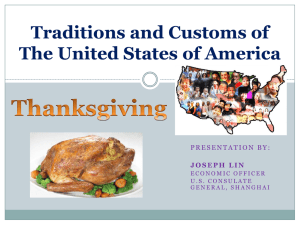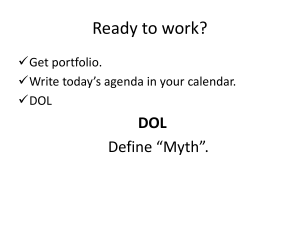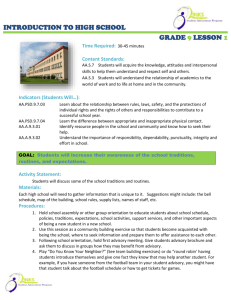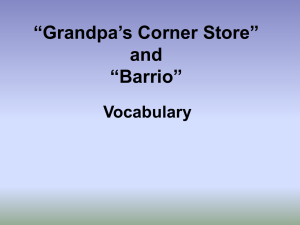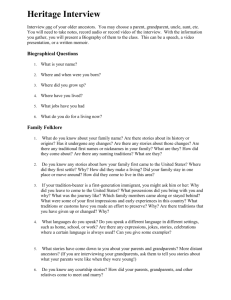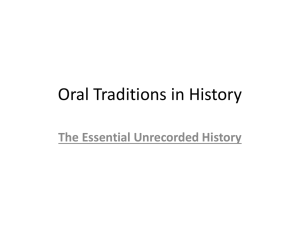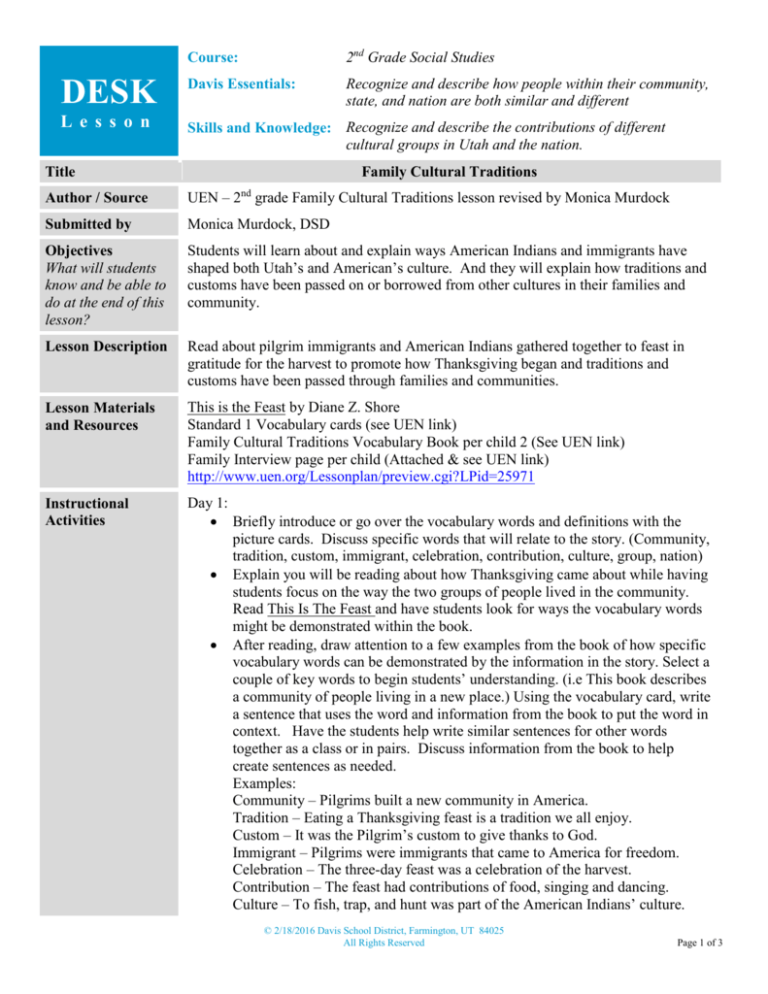
Course:
2nd Grade Social Studies
DESK
Davis Essentials:
Recognize and describe how people within their community,
state, and nation are both similar and different
L e s s o n
Skills and Knowledge: Recognize and describe the contributions of different
cultural groups in Utah and the nation.
Title
Family Cultural Traditions
Author / Source
UEN – 2nd grade Family Cultural Traditions lesson revised by Monica Murdock
Submitted by
Monica Murdock, DSD
Objectives
What will students
know and be able to
do at the end of this
lesson?
Students will learn about and explain ways American Indians and immigrants have
shaped both Utah’s and American’s culture. And they will explain how traditions and
customs have been passed on or borrowed from other cultures in their families and
community.
Lesson Description
Read about pilgrim immigrants and American Indians gathered together to feast in
gratitude for the harvest to promote how Thanksgiving began and traditions and
customs have been passed through families and communities.
Lesson Materials
and Resources
This is the Feast by Diane Z. Shore
Standard 1 Vocabulary cards (see UEN link)
Family Cultural Traditions Vocabulary Book per child 2 (See UEN link)
Family Interview page per child (Attached & see UEN link)
http://www.uen.org/Lessonplan/preview.cgi?LPid=25971
Instructional
Activities
Day 1:
Briefly introduce or go over the vocabulary words and definitions with the
picture cards. Discuss specific words that will relate to the story. (Community,
tradition, custom, immigrant, celebration, contribution, culture, group, nation)
Explain you will be reading about how Thanksgiving came about while having
students focus on the way the two groups of people lived in the community.
Read This Is The Feast and have students look for ways the vocabulary words
might be demonstrated within the book.
After reading, draw attention to a few examples from the book of how specific
vocabulary words can be demonstrated by the information in the story. Select a
couple of key words to begin students’ understanding. (i.e This book describes
a community of people living in a new place.) Using the vocabulary card, write
a sentence that uses the word and information from the book to put the word in
context. Have the students help write similar sentences for other words
together as a class or in pairs. Discuss information from the book to help
create sentences as needed.
Examples:
Community – Pilgrims built a new community in America.
Tradition – Eating a Thanksgiving feast is a tradition we all enjoy.
Custom – It was the Pilgrim’s custom to give thanks to God.
Immigrant – Pilgrims were immigrants that came to America for freedom.
Celebration – The three-day feast was a celebration of the harvest.
Contribution – The feast had contributions of food, singing and dancing.
Culture – To fish, trap, and hunt was part of the American Indians’ culture.
© 2/18/2016 Davis School District, Farmington, UT 84025
All Rights Reserved
Page 1 of 3
Group – The Paxuxets were a group of American Indians.
Place – The pilgrims sailed to a new place to live.
Nation – Our nation has Thanksgiving each year to remember the pilgrims.
Compare – The pilgrims wore more clothes compared to the American Indians.
Contrast – The American Indians gathered most of their food in contrast to the
pilgrims who planted many of their foods.
Bonus: Create a sentence using as many of the vocabulary words to describe
the story details. Ex: Our nation has a tradition of celebrating Thanksgiving to
remember a group of pilgrim immigrants who built a community in a new
place to live their culture and customs in freedom.
As a review, discuss some of the traditions, customs, or cultures of the two
groups and how they compare to families and communities today.
Explain the Family Interview page and how students will talk to a family
member about traditions. They will write their answers on the page and bring
it back for another lesson. Students can also draw a picture on the back of a
family tradition they want to explain to others.
Day 2:
Quickly review the vocabulary words by having students write a few (8) of the
words and a simple definition in the Family Cultural Traditions vocabulary
book.
Share and compare traditions in the community by modeling how to present
information from the interview page. Then demonstrate how to compare and
contrast family cultures within a community. Divide students in small groups
(4-5) to share about their family interview and picture of a tradition. Have
students compare and contrast a couple of traditions or customs among their
families. They can verbalize this as a group to the class, or write it down for a
whole class chart.
Have students think of examples from their family or community that will
demonstrate the meaning of the vocabulary words. Students will write simple
sentences and pictures in their vocabulary booklet using the vocabulary words
and information about their family just as they did with the book previously.
Formative
Assessment
How will I check for
understanding?
How will students
show what they
know?
Students will be able to identify traditions and customs of pilgrim immigrants and
American Indians that have contributed to our nation’s culture by writing sentences
using vocabulary in context while describing examples from the book.
Extending the
Lesson
What are ways to
reteach the
objectives?
What are ways to
enrich the lesson?
Students can give class presentations about their family traditions or cultural
comparisons. They might include an artifact that is used or represents a tradition in a
culture.
Students can read about or research other cultural traditions and customs that are in
Utah and the Nation.
Practice vocabulary cards while playing charades or Pictionary in small groups.
Students will demonstrate their knowledge of how traditions and customs are passed
down or borrowed within families and communities by comparing and contrasting
them in discussion and writing contextual examples in sentences.
© 2/18/2016 Davis School District, Farmington, UT 84025
All Rights Reserved
Page 2 of 3
Family Interview
My name is ____________________________________
There are __________ people in our family. Here are some interesting facts
about our family.
___________________________________________________________________
___________________________________________________________________
___________________________________________________________________
___________________________________________________________________
___________________________________________________________________
___________________________________________________________________
___________________________________________________________________
We speak the following language(s) in our home:
___________________________________________________________________
An ancestor is a relative who lived before you. My ancestors came from:
__________________________________________________________________.
Our family has some interesting cultural activities, events and beliefs that are
passed down from generation to generation. These are called traditions. Some of
the traditions that I especially enjoy are:
___________________________________________________________________
___________________________________________________________________
___________________________________________________________________
___________________________________________________________________
Bonus: A tradition that I think would be fun to start in my family would be:
___________________________________________________________________
___________________________________________________________________
___________________________________________________________________
___________________________________________________________________
© 2/18/2016 Davis School District, Farmington, UT 84025
All Rights Reserved
Page 3 of 3


